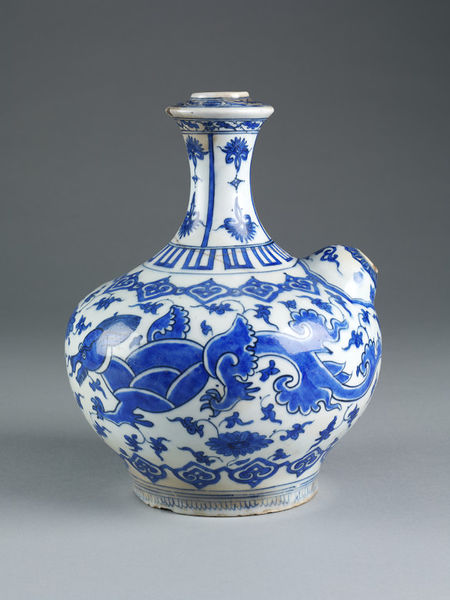As part of my ongoing research into cobalt blue on white ceramic objects I've created a number of cups to demonstrate the influence of the Chinese items on the middle east and european potters. These first cups replicate design elements from BoW items originating in Iran.
The first extant item was produced in the Timurid era (1370 - 1526) and features Asian design elements. It is created from stonepaste (aka fritware) which is a technique originating in Iraq which adds frit or quartz to the clay to harden it. A tin-glaze is then applied creating a white background before cobalt decorations are painted on. The extant plate features a lotus design in the base with line of inscription on the slope near the rim. The lotus is associated with the Chinese, indicating a strong influence over the design motifs associated with BoW items.

Plate, Iran. Timurid period 1450-1500. Freer Slacker Collection item - S1997.67
The second extant item is a bottle was produced during the Safavid dynasty (1526-1722). Painted with a winged dragon this items bridges the Chinese Mingware and the Persian Black and Blue ware. Though most people would assume this dragon is Chinese it is strongly influenced by the Persian culture. Most Ming era chinese dragons feature spikes along the spine and at ankle joints such as in this early vase or this later vase and this amazing jar. It seems that the Iranians adapted the Chinese dragons to the more flowing style of the Persian dragons. This pottery jug produced in Iran seems to show the transition of the design into the more sinuous beastie on the bottle below.

Bottle, Iran. Safavid period, 1587-1642. Victoria and Albert museum. Item 1076-1876

No comments:
Post a Comment